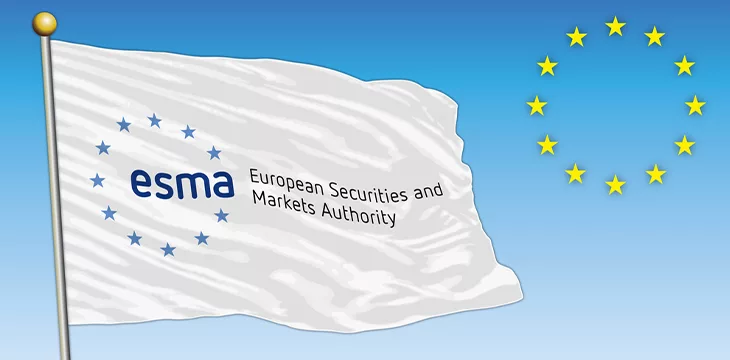|
Getting your Trinity Audio player ready...
|
The European Securities and Markets Authority (ESMA), the European Union’s financial markets regulator and supervisor, published a letter to the European Commission, the Parliament, and the Council on Thursday, providing an interim update on the bloc’s distributed ledger technology (DLT) Pilot Regime.
The letter highlighted low uptake and a number of outstanding challenges faced by the pilot regime.
“With one year of experience navigating the Pilot Regime, one of the conclusions by ESMA is that the novelty of this particular regime may explain its relatively slow uptake,” the letter read.
ESMA is required to publish annual interim reports on the regime, to provide market participants with information on the functioning of the markets, address incorrect behavior of operators of DLT market infrastructures, provide clarification on the application of the regulation, and update previous guidance based on the evolution of DLT.
However, given that no DLT market infrastructures have been authorized yet, as of the entry into application of the DLT Pilot Regime on March 23, 2023, ESMA stated that it did not intend to publish a full report this year, instead opting for a letter.
The four-page letter provided an update on the status of applications to the pilot regime received by national competent authorities (NCAs) to date, as well as a list of challenges and opportunities identified by ESMA in the first year of application.
The DLT Pilot Regime was first announced back in June 2022, when the European Parliament and Council finalized laws to regulate a pilot project to test the use of blockchain technology for the tokenization of securities. The regulation introduced by the EU for the pilot included exemptions to allow for innovation, one of which was that regulated exchanges could deal with retail investors.
ESMA signed off on the pilot in September 2022 and began applying as of March 23, 2023. In its monitoring of the pilot over the past year, the regulator identified a number of challenges, several related to the slow uptake.
“Four official applications have been submitted. These applications are currently under assessment by the respective NCAs, who have also raised questions arising from the applications for discussion at ESMA’s DLT Working Group,” said ESMA, who went on to predict that “around eight other potential applications may be submitted during the course of this year.”
ESMA suggested that a lack of clarity in some aspects of the regime may be affecting enthusiasm from the market. Specifically, uncertainty about the duration of the DLT Pilot Regime, the regulatory expectations for custody services in the context of the DLT market infrastructures, and the specific roles and responsibilities of the various entities.
Other challenges to the implementation of the DLT Pilot Regime, according to ESMA, included the use of self-hosted wallets; the interoperability between DLT market infrastructures and traditional market infrastructures; the identification of “sound and convergent compensatory measures” to ensure investor protection; and the competitiveness of third-country regimes.
ESMA also noted that the absence of an EU central bank digital currency (CBDC) proved “a significant challenge, but also an opportunity,” due to the possibility of using innovative solutions for cash settlement that do not involve traditional—fiat—cash.
Despite this, ESMA welcomed the Eurosystem initiative to organize trials and experiments in 2024 for central bank money settlement of wholesale financial transactions recorded on DLT platforms.
ESMA said it would continue to work closely with NCAs, including by issuing opinions on the DLT market infrastructure applications, and going forward it would publish annual updates on the implementation of the DLT Pilot Regime.
Watch: Blockchain provides perfect foundation for CBDC

 09-11-2025
09-11-2025 





